Wow.
Wow.
The Wall Street Journal reports:
Italian luxury-goods mogul Diego Della Valle has increased his stake in Saks Inc. to 19.05%, becoming the biggest shareholder at the high-end U.S. retailer, according to filings with the Securities & Exchange Commission.
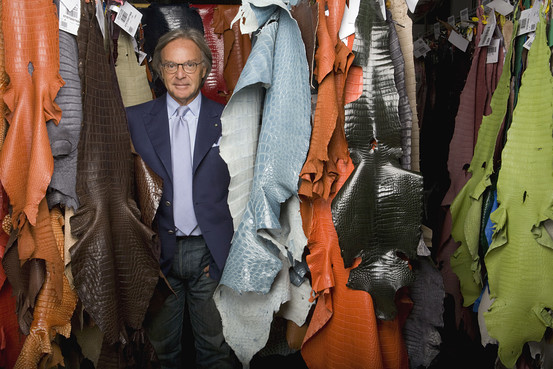
Signor della Valle is a colorful fellow and very successful Italian businessman. He made his fortune with two luxury shoe brands, Tod’s and Hogan.
Coincidentally, the Journal’s magazine ran an extensive article on the man and his company last week and had this to say:
Tod’s is the European carpetbagger of the American preppy look. The Italian luxury brand, which Della Valle built in the 1970s on the foundations of his family’s cobbler business, has become a staple of a way of dressing that idealizes weekends in the Hamptons and Cape Cod. Tod’s soft moccasins, their soles dotted with 133 rubber nubs, supplanted penny loafers to become the choice footwear pairing for all-American khakis and white button-down shirts.
As of 2:30 pm EDT today, Saks stock (SKS – NYSE) was up $0.86 or 8.5% since Wednesday’s close of $10.12. Now that Della Valle is the department store’s largest shareholder, could he assume a new role in life — that of White Knight?
Background article:
The Independent: Diego della Valle: Meet the Italian Ralph Lauren
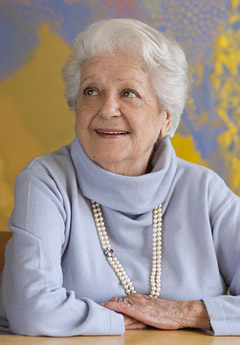
Cooking at home today, I referenced Marcella Hazan’s Essentials of Classic Italian Cooking, as I seem to do more often than I realize. The book, published in 1992, is a fully revised and updated edition of The Classic Italian Cook Book (published in 1973) and More Classic Italian Cooking (published in 1976). So this classic collection of classic Italian recipes and techniques – nearly 40 years old – is now itself a classic.
Marcella Hazan has sold more than a million books – and with good reason. Beautifully written, she takes you step by step through Italian dishes from nearly every region of Italy. Her techniques are explained in vivid detail and she offers a fascinating glimpse into Italian culinary history.
In 2008 – at the age of 84 – she wrote an autobiography, Amarcord: Marcella Remembers. The Remarkable Life Story of the Woman Who Started Out Teaching Science in a Small Town in Italy, but Ended Up Teaching America How to Cook Italian. As The New York Times describes it, the book “offers for the first time a public glimpse into the professional and romantic relationship between a science teacher from a small Italian town in Emilia-Romagna and the Italy-loving son of Jewish New York furriers. It is a marriage that shaped how Italian cooking came to be defined in the United States.”
And this from Publisher’s Weekly:
In 1969 Hazan gave the private cooking class that launched her career as the Italian Julia Child. In an evocative memoir, she recounts her life from childhood to Florida Gulf Coast retirement. Hazan spent her earliest years on another coast, in Cesenatico, a village on the Adriatic; during WWII the family moved to a lake in the mountains between Venice and Milan. Fresh out of the university, she taught college math and science and met a young man who had returned to his Italian homeland after more than a decade in America. He loved food, and his worldliness and sophistication made a good match for the comparatively earthbound author. After they married, the couple moved several times between various places in Italy and America. During a long stay in New York, Hazan began to offer the Italian cooking lessons that later caught the attention of such chefs as New York Times food writer Craig Claiborne. This led to the writing and publication in 1973 of The Classic Italian Cookbook. Hazan’s memoir is a terrific history of the expansive, postwar period when Americans were still learning the difference between linguine and Lambrusco, and an engaging chronicle of professional perseverance, chance and culinary destiny.
Every cook — whether a professional or a home enthusiast who loves Italian cooking — should have at least one cookbook by Marcella. Her recipes and techniques inspired many of Bellavitae’s dishes, and I still often refer to her timeless advice at home.
Here are her cookbooks:
As part of her promotional book tour, she granted epicurious.com an interview and here are a few of my favorite quotes:
“When I go to a restaurant and they give me a very complicated, very beautifully arranged dish, I don’t think it’s food. I would like to ask the waiter to give me a camera to take a picture and afterwards tell him, ‘Now give me food, please.’ I don’t want to impress. I want to do something that is good. Try to make straightforward food and get it to the table.”
“I remember once I was explaining something about the butcher and I mentioned that when you have a piece of meat you have to cut against the grain because it’s a muscle. And when I said ‘muscle,’ everyone made a strange face. And I stopped and I said, ‘Well, what do you think that you are eating?’”
“Sometimes they overdo it. Before, they were serving the pasta that was gluey because it was overcooked. And so I said, no it has to be al dente. Now sometimes I go to a restaurant and the pasta is not cooked. It just got in the water for a moment and came out. That is too much!”
“Cooking brings out the taste. If you cook vegetables too little because you want them crunchy, they all have one thing in common: They taste like grass.”
On produce from the supermarket: “Those vegetables and fruits come from very far and naturally if they pick them at the moment they’re ripe they cannot [survive] a long time traveling. When they reach the store, if they look ripe, they are not ripe normally. What I mean is not ripe in the air, in the sun, attached to the tree. It is just ripe in the wrong way, so it’s not good. And that is happening very often with many vegetables and many fruits. Now we have the season of peaches and they look wonderful. After you come home, yes, they are soft, they are ripe, but they are not sweet because they did not have the time outside, attached to the plant to convert the juice into sugar.”
On why home cooking is important: “It is a way of bringing the people of the family together—to be together, to talk. And what is the best way to bring them? If you offer them good food. They enjoy it, they look forward to it, and that is why it is very important.”
Vinum Nostrum: Art, Science and Mythology of Wine in Ancient Mediterranean Civilizations
Florence’s Palazzo Pitti (Museo degli Argenti [Silver Museum]) currently features a fascinating exhibition where visitors are taken on a fascinating journey through the history of wine. Can’t make it to Florence? You can visit the exhibit’s excellent website.
The exhibition is divided into sections on Georgia and the Caucasian Region (where the grapevine was first domesticated), Ancient Egypt, the Near East, Etruria, Magna Graecia and the Italic World, the Routes of Dionysius, and Pompeii.
Visitors learn about the religious and cultural values associated with wine in the different civilizations, methods of production, the grapes used, how the grapevine spread throughout the known world, and how the Romans – the first civilization to turn winemaking into an industry – transported the product.
Many vessels that were made to hold wine are on display, the most important of these being a wine storage container from Georgia, which is 8,000 years old. It is the oldest known vessel for storing wine in the world and is on loan from the Georgian National Museum in Tbilisi.
Other original artifacts, sculptures, frescoes, paintings and mosaics, all of which contribute to the story of wine down the ages, are also on display. Artifacts from Pompeii have been particularly important in helping experts chart the history of wine production and consumption.
The exhibit runs through May 15, 2011.
Entrance fee is €10.00.
Hours:
Until October 30th: 8:15 am – 6:30 pm
October 31st: 8:15 am – 5:30 pm
November 2nd – February 28th: 8:15 am – 4:30 pm
March 1st – March 26th: 8:15 am – 5:30 pm
March 29th – April 30th: 9:15 am – 6:30 pm
Closed: First and last Monday of each month, December 25th and January 1st.
.

.
Last month, Italy magazine interviewed Carmelita Caruana, “your authentic Italian cooking lady.” Based in Bologna, Carmelita not only blogs about authentic Italian cooking, but since 1999 has presided over a well-regarded cooking school with classes throughout Italy.
I love Carmelita’s cooking mantras:
Her blog is full of wonderful recipes and beautiful food photography (click on the photos for recipes):
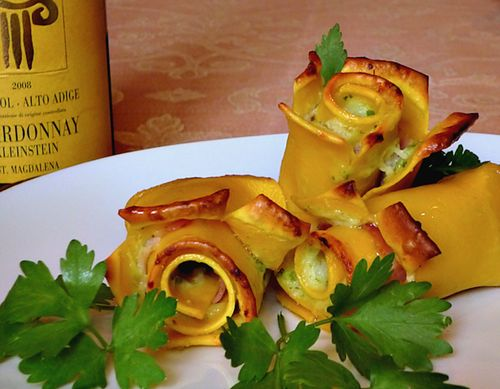
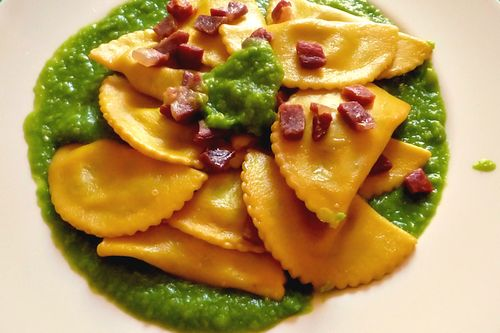
This is a great blog to follow, and if you’re planning to be in Italy, check out her cooking school!
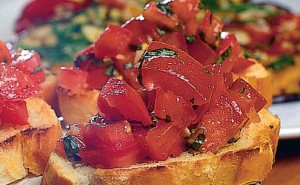
Eleonora Baldwin: “I’ll spare you speeches on how chicken Parmesan isn’t Italian. Volumes have been written about the dubiously Italian nature of Fettuccine Alfredo, spaghetti with meatballs, and Caesar salad. Still, there are a few generalizations and assumptions that stop me in my tracks.”
My favorite has always been “paninis”.
The fundamental essence in many Italian dishes begins with a battuto, soffritto, or trito. These elemental methods in Italian cooking are not afterthoughts or merely decorative, but where Italian flavor begins. To know Italian cooking is to become familiar with these techniques.
A battuto is a flavor base of finely chopped or beaten raw ingredients. The word is a derivative of battere, which means “to strike”, and describes the use of a chef’s knife chopping on a cutting board. A battuto is usually a very finely chopped mixture of lardo (cured pork back fat), salt pork, pork fat, or pancetta with garlic and onions. It can also contain celery, carrots, chilies, and / or other chopped ingredients. Originally, a battuto was parsley and onion chopped in creamed pork lard, but today cooks have substituted olive oil or butter for lard and added other vegetables as well. In Italy, many butchers sell a pre-made basic battuto. Simmered in water, battuto can also serve as an alternative to more expensive meat broth.
Lardo battuto is cured pork fat pounded to a cream with herbs and garlic, used for stuffing or added to a broth or stew at the beginning or end of cooking.
A battuto becomes a soffritto when it is gently sautéed in fat, usually olive oil. A more precise definition of soffritto is a mixture of vegetables – usually onion, celery, carrot, garlic, herbs, and sometimes lardo or pancetta – sautéed in olive oil or butter until they become soft and caramelized, imparting their flavors to any ingredient that follows.
A trito is the same as a battuto but doesn’t contain pork. It’s very finely chopped vegetables, usually including some combination of onions, celery, garlic, carrot, and parsley. Other cuisines use this same technique: refogado in Portuguese, sofrito in Spanish, sofregit in Catalan, mirepoix in French, and “holy trinity” in Creole cooking.
Crudo is a trito of raw vegetables and herbs or other ingredients that are added to a dish or sauce, and then cooked. It can also be a mixture of raw herbs and vegetables that is put directly on (or mixed with) cooked food just before serving, as in Venetian risi e bisi (rice and peas) or pasta primavera.
Italians take their battuti and soffritti very seriously and it’s fair to say that grandma can keep hers a secret. Here are some tips for success:
.
Related: Mastering the Techniques of Sautéing and Browning
.
.
Welcome to the new home of Bellavitae’s blog. We may have closed the doors of our physical location, but our enthusiasm for Italian food and wine remains undiminished.
Take some time to look around and see what’s new:
We hope you enjoy our new format and content. Please visit often! As always, we appreciate any comments you may have.
Grazie!
Winding down the restaurant has been more exhausting than I ever imagined. My dear friend Andreas recently invited me to spend a weekend at his mother’s home on Long Island for some rest and relaxation. Beautiful gardens and an inviting swimming pool surround her home. How could I refuse?
Andreas is an accomplished baker – his family is full of professional bakers, so it’s in his blood. Moreover, he recently completed extensive baking instruction at New York’s French Culinary Institute. What better way to relax than enjoy the garden, the pool, and baking?
I met Rose Levy Beranbaum a few months ago when she began coming to Bellavitae at the recommendation of Karen Page and Andrew Dornenburg. Her cookbooks are well suited for every type of baker, from the novice (me) to the expert (Andreas). I had success with bread recipes from Rose’s The Bread Bible, so I asked Andreas if we could try some desserts from The Pie and Pastry Bible. He’s a fan of Rose’s so no convincing was necessary.
Here’s what we made:
Open-Faced Fresh Blueberry Pie (page 107)
There are several blueberry bushes on the property and the fruit is now at its peak. This pie seemed like the perfect choice. We put a twist on the recipe by using the crumb topping Rose uses on her Apple Crumb Pie (page 86). We used her Basic Flaky Pie Crust (Page 22).
The dessert turned out beautifully – the pie’s star was undoubtedly the blueberries, which we had freshly picked. No cloying sauce or heavy pastry to crowd out nature’s sweet gift to summer – fresh berries. What a delight.
Classic Napoleon (page 453)
Gulp. What dessert is more intimidating? Or more satisfying! I hadn’t had Classic Napoleon since the last time I vacationed at the Cala di Volpe. This resort hotel on Sardinia’s Costa Smeralda may very well have the best hotel lunch in the world. The freshest, most carefully crafted cuisine still remains in my memory – including their Napoleon, which I had at least once a day (!)
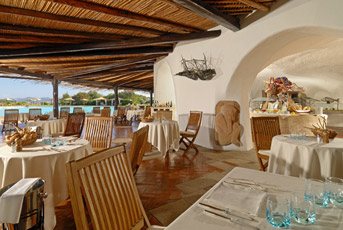
The Napoleon is a combination of many French classics:
Classic Puff Pasty [Millefoglie in Italian] (Page 417)
Puff pastry seems to be the threshold over which all would-be pastry chefs must cross. Once again, Rose guides you through the process with ease, anticipating any question or problem that may arise during your endeavor. And yes, Rose, we gave the pastry a total of seven turns!
Poured Fondant (Page 581)
What used to be a painstaking process for this cream confection is now extraordinarily easy with Rose’s use of a food processor.
Pastry Cream [Crème Pâtissière] (Page 560)
Rose’s version of this classic custard is light but still flavorful due to her use of whole eggs (instead of just the yolks) and half-and-half (instead of heavy cream). Fat tends to dull the palate, so a lighter pastry cream will allow other flavors of any dessert to shine (éclairs, fruit tarts, and of course Napoleons).
Chocolate Drizzle Glaze (Page 454)
As Rose suggests in other recipes, we used chocolate that had not too-high a percentage of cocoa – I think we used 52%.
Cooking – and baking – can be so relaxing. And it’s a fun project to do with a dear friend. Our two desserts turned out wonderfully and I just finished the last piece of the Napoleon today – it kept well refrigerated since Sunday.
So thanks Andreas and Rose (and Ingeborg and Wil). I have a few new techniques under my belt!
By the way, Rose has one of the most helpful websites / blogs for baking and I highly recommend it. She has developed a sizeable following of bakers that write in to offer comments and ask questions. So if you cook from one of her books and get stuck, you can simply check out her blog for comments or even write in and wait for her to answer, something that is rare in the cookbook world.
Finally, here is what amazon.com has to say about The Pie and Pastry Bible:
Reading about the ins and outs of baking the perfect, flaky pie crust is a little like reading about how to achieve the perfect golf swing: the proof is in the doing. And it often takes a remarkably intuitive reader to understand exactly what the author is getting at. Not so the work of Rose Levy Beranbaum, the author who gave us The Cake Bible. If ever there was a cookbook author who could place her hands on top of yours, putting you through the proper motions, helping you arrive at just the right touch, Beranbaum is the one.
The Pie and Pastry Bible begins with the crust. The author confesses right up front that 21 years ago, when she first began her quest for the perfect crust, “it was a complete mystery to me.” She wasn’t looking for a once-in-a-lifetime experience, but something she could consistently turn out at a moment’s notice. The ideal pie crust, she writes, “has light, flaky layers, but also … is tender, and nicely browned, with a flavor good enough to eat by itself.”
In a book that stretches to about 700 pages long, her favorite pie crust is the first recipe: Perfect Flaky and Tender Cream Cheese Pie Crust. Typically, Beranbaum lists the ingredients by measure and weight for three separate sizes of pies, then gives instructions for the food processor or by hand.
After 70 pages of pie crusts, tart crusts, and crumb pie crusts of every imaginable make and combination, Beranbaum starts with fruit pies. Her first (of many) detailed charts shows exactly what her ratios are of fruit to sugar to cornstarch. Then each recipe (start with The Best All American Apple Pie) includes pointers for success as well as several variations on the theme. Under the headline “Understanding,” Beranbaum goes that extra mile by taking the trouble to explain just why something works the way it does.
If you are only going to own one cookbook for pie and pastry recipes of every imaginable stripe and combination, you can’t go wrong with this one. It’s the Bible, after all.
–Schuyler Ingle
Theme: Food Express WordPress Food Theme is developed by Template Express.
Proudly powered by WordPress